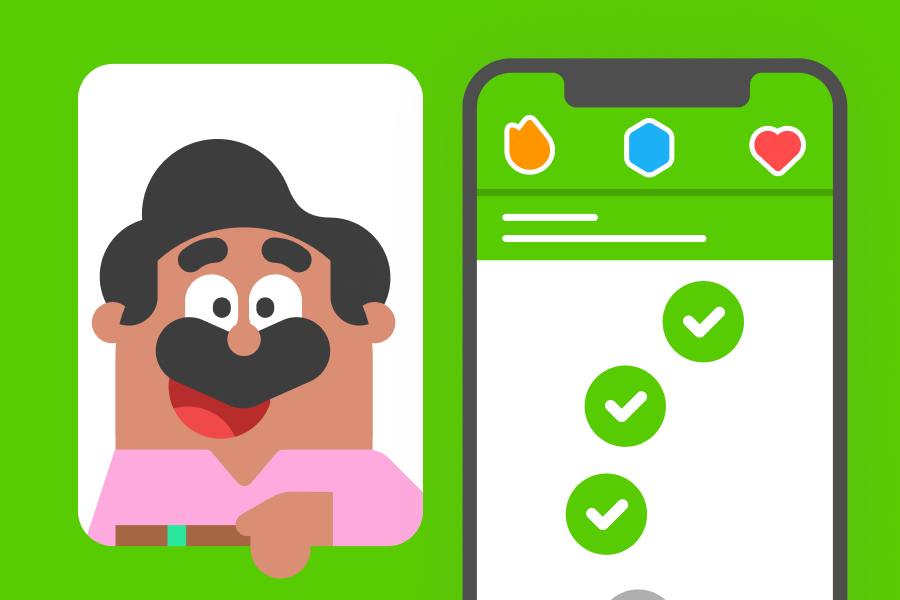This is the first of four posts about the most important skills for a language learner: reading, listening, writing, and speaking. Each week, we’ll focus on a different skill to understand how it works, the best way to learn it, and how you can practice it! This week our focus is on reading.
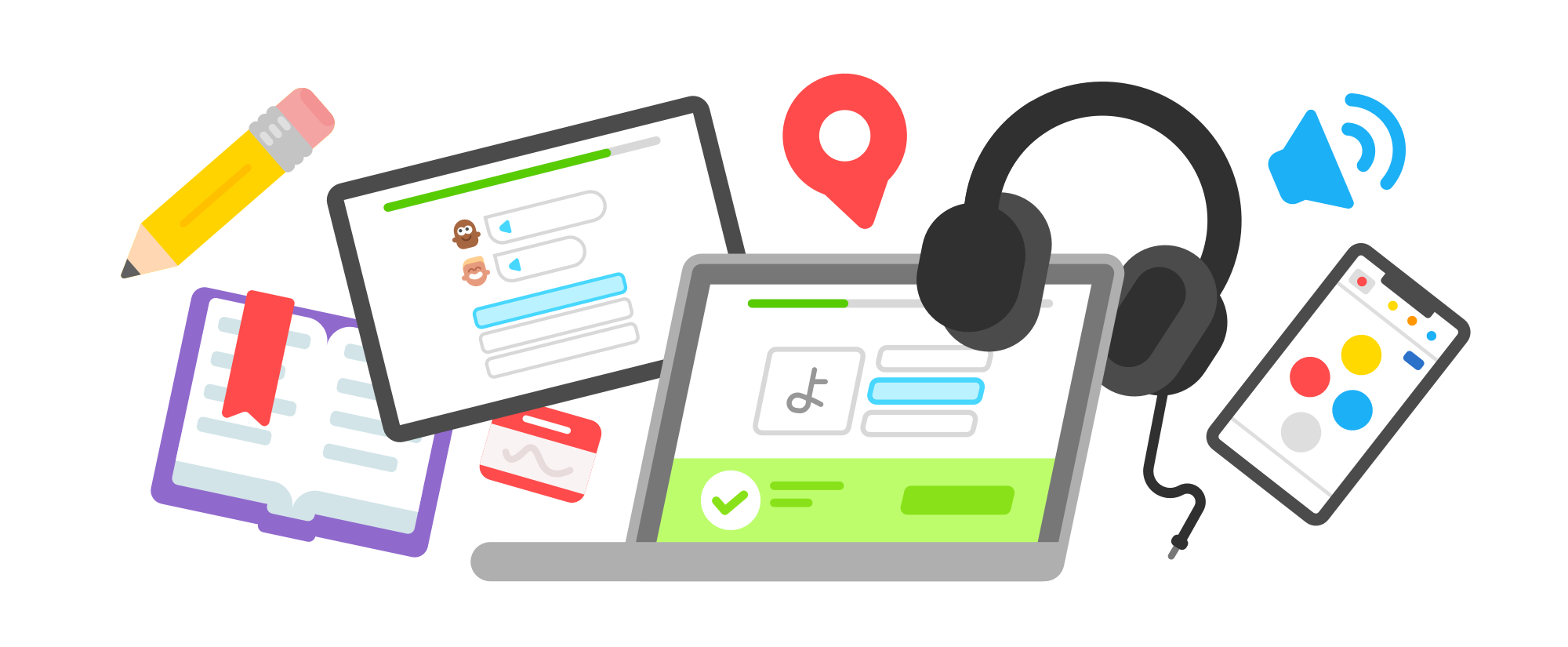
Reading has always been a core language skill, and it’s even more important as we interact so much online and through our phones! Instead of just reading books, menus, and museum signs, learners now expect to read text messages from new friends, subtitles on Netflix, and the latest celebrity gossip on Twitter in the language they’re studying.
In many reading contexts, you have the chance to go back and re-read the information: you can think about all the different words and endings used, and you can reconsider and re-think what it means and why. However, in lots of digital reading contexts, like texting and social media posts, you’ll want to read fast!
In this post we dive into how we teach reading at Duolingo, what the science says about how reading works, and the best ways for learners to practice it.
Duolingo’s all-star lineup
To practice reading, our courses get you reading words and short phrases right from the start. Reading is the focus when you’re introduced to new topics and vocabulary. The sentences you read get gradually longer and more complex throughout the course to scaffold your learning—gradually build up your reading skills. We’re also adding new content to get you reading connected sentences, like in dialogues and paragraphs, right from the beginning of the course!
Here are some of our favorite reading features:
- Right in each lesson, learners get a variety of exercises to practice reading. Have you seen our newest exercise types, like the reading comprehension exercise on the right? They’re coming to a course near you soon!
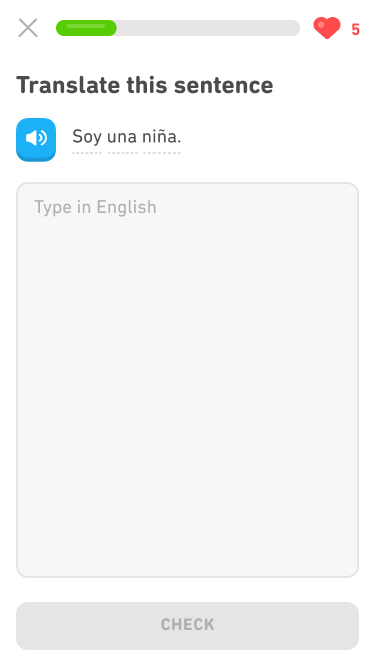 |
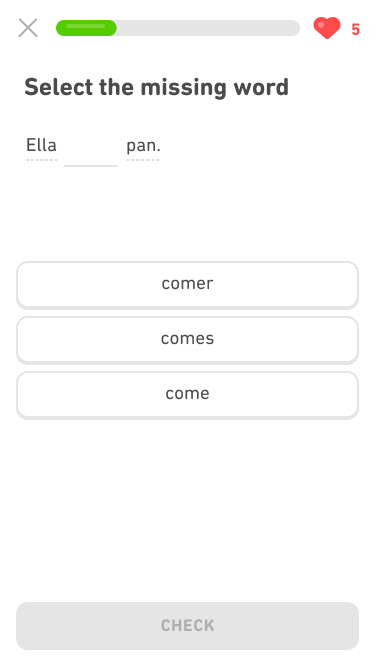 |
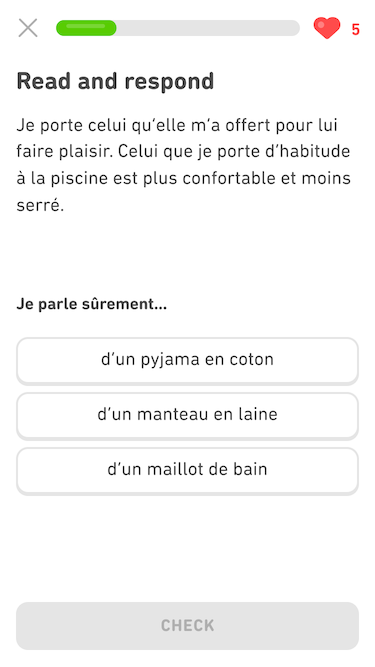 |
- Stories are short, fun dialogues that get you reading conversational language. You’ll be picking up words and phrases without even feeling like you’re studying! If you see levels with the book icon in your path, that means your course has Stories!
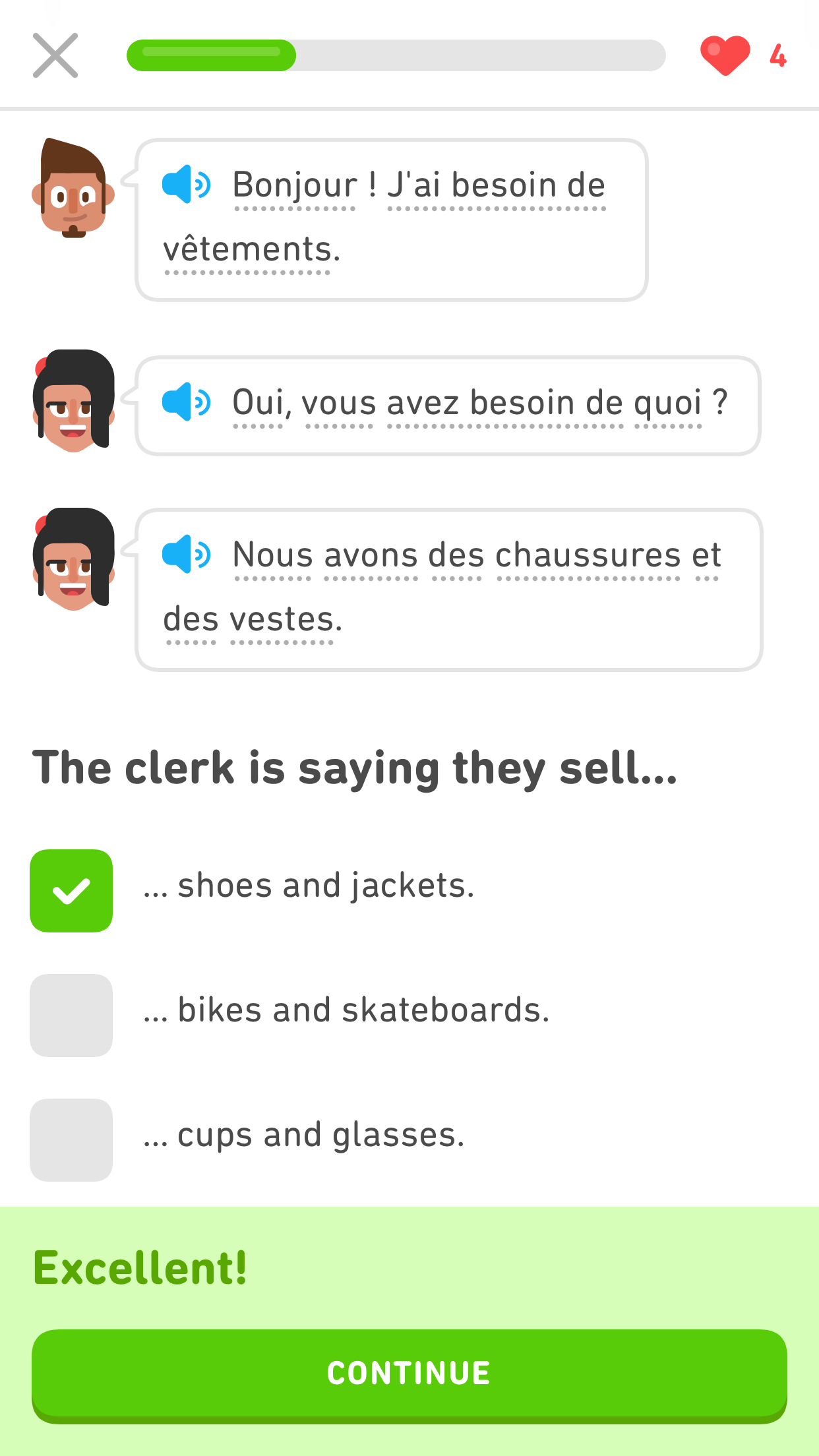 |
 |
- In some languages, you need to learn a new writing system to be able to read! For certain languages that use non-Roman scripts, we provide lessons focused on the letters or characters and their sounds and meaning.
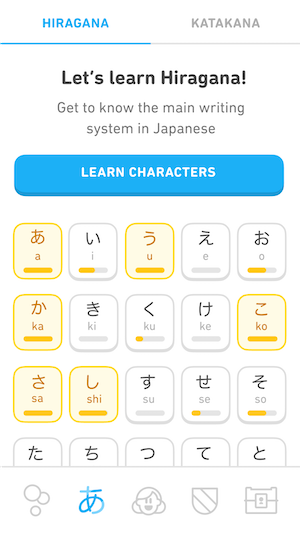
- All of our Duolingo Podcasts have transcripts that you can read on their own when you can’t listen, or you can use them for extra practice.
Let’s talk strategy: How does reading work?
Reading is a receptive skill, which means you receive the information in the new language (that is, someone else wrote it!). This often feels easier than having to produce the language yourself, and reading is a great way to see how the language is used. Not to mention how much you can learn about the speakers and their cultures from reading information in the language!
When you read in a language you know well, your brain jumps right away to the meaning of what you’re seeing, but it takes a long time to automate that process in another language. After seeing a word, you have to identify the component parts (like prefixes or verb endings), retrieve the meaning of each part from your memory, and then process those meanings (and link them to other meanings you just read). This retrieval process is called bottom-up processing, but reading also requires top-down processing: integrating what you know and expect about the situation, topic, and person writing it. Good readers balance top-down and bottom-up processing to efficiently get to the author’s meaning – the message they wanted to convey to you (the content) and how they phrased it (friendly? formal? annoyed?).

Learners also face different kinds of challenges depending on what language they’re learning to read. Languages like English are alphabetic, where letters represent sounds, but even alphabetic languages can vary widely: For example, Hebrew and Arabic also use alphabetic writing, but they are written from right to left and they typically write only the consonants (no vowels!). Arabic letters also change how they look depending on what letters they’re next to. Korean symbols are also alphabetic, but they are written together in syllables. Unlike languages representing sounds or syllables in writing, Chinese uses characters to represent whole words or concepts, and characters can be pronounced differently depending on what they mean in the sentence! Meanwhile, Japanese learners are faced with characters and two writing systems based on syllables, and which system you use depends on whether the word originally came from another language. 🤯
Learning off the field
To really knock it out of the park, find ways to incorporate reading practice in your everyday routine!
- Change the language on your phone to the language you’re learning.
- Add the language’s keyboard to your phone to make googling for reading material even easier.
- Read blogs, follow Twitter accounts, and join Facebook groups with posts in the language you’re learning.
- Read articles and news in the language. You’ll often be able to rely on your general knowledge of current events to help you understand.
- Read Wikipedia and books in the language, maybe starting with topics you’re already familiar with.
For rookie learners, consider starting with reading material on topics you’re already familiar with – that way you have a sense of what to expect, which will help you learn and remember the meaning of new words and structures. (That’s top-down processing helping you get to the meaning!) You can also read short books, children’s books, and books you already know and love in your own language. You might even consider re-watching a favorite movie, but with subtitles in the language you’re learning!
More veteran learners might enjoy reading brand new material in the language. You can also challenge yourself to practice reading more informal, conversational language on social media. Find movies in the language and turn on subtitles to practice reading with helpful visual context.

Taking your learning to the big leagues
Successful communication always relies on combining your language skills! Now that you know more about how we’re helping you become a confident reader in the language, check back next week to learn about another key language skill: listening!


